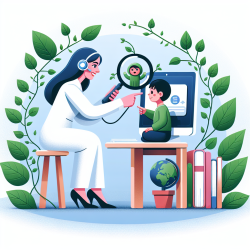Introduction
Language is a dynamic entity, constantly evolving to meet the needs of its users. Recent research, such as the study "Language: Its Origin and Ongoing Evolution," highlights the intricate relationship between language development and human evolution. As practitioners in speech-language pathology, understanding these evolutionary principles can significantly enhance our approach to therapy and intervention.
Key Findings from the Research
The research emphasizes that language is not a static skill but one that evolves through usage and adapts to various selective pressures. This aligns with the multimodal and usage-based theories of language emergence, which suggest that language develops in response to environmental, social, and technological factors.
Some key insights include:
- Multimodal Emergence: Language evolves through multiple channels, including auditory, visual, and gestural, reflecting the complex interplay of communication modes.
- Environmental Influences: Physical environments, such as climate and geography, can shape linguistic features, influencing tone, vowel usage, and other phonetic elements.
- Socio-Demographic Factors: The size and diversity of language-speaking populations affect language complexity and structure, with larger groups tending to simplify language for broader communication.
- Technological Impact: The rise of digital communication has introduced new linguistic conventions, such as emojis and abbreviations, reflecting language's adaptability to new contexts.
Implications for Practice
For speech-language pathologists, these findings offer valuable insights into how language can be tailored to individual needs. By considering the evolutionary aspects of language, practitioners can:
- Develop Multimodal Strategies: Incorporate visual and gestural elements into therapy to enhance communication, especially for children with diverse learning needs.
- Adapt to Environmental Contexts: Tailor interventions to the child's physical and social environment, recognizing how these factors influence language development.
- Leverage Technology: Utilize digital tools and platforms to engage children in language learning, taking advantage of their familiarity with text-speak and emojis.
Encouraging Further Research
The study "Language: Its Origin and Ongoing Evolution" provides a robust framework for understanding language development. However, there is always more to explore. Practitioners are encouraged to delve deeper into the research, experiment with new approaches, and contribute to the growing body of knowledge in this field.
To read the original research paper, please follow this link: Language: Its Origin and Ongoing Evolution.










